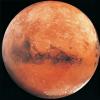Hello,
I was told that we should sanitize the food contact surfaces after we swab with the 3M Sponge Stick 10ml buffered peptone water broth. Does the peptone water broth present a risk to the food contact surfaces and the environment? We usually swab during production and I would like to know if we should sanitize and dry the piece of equipment before running product again.
Thank you,
Nicole


















